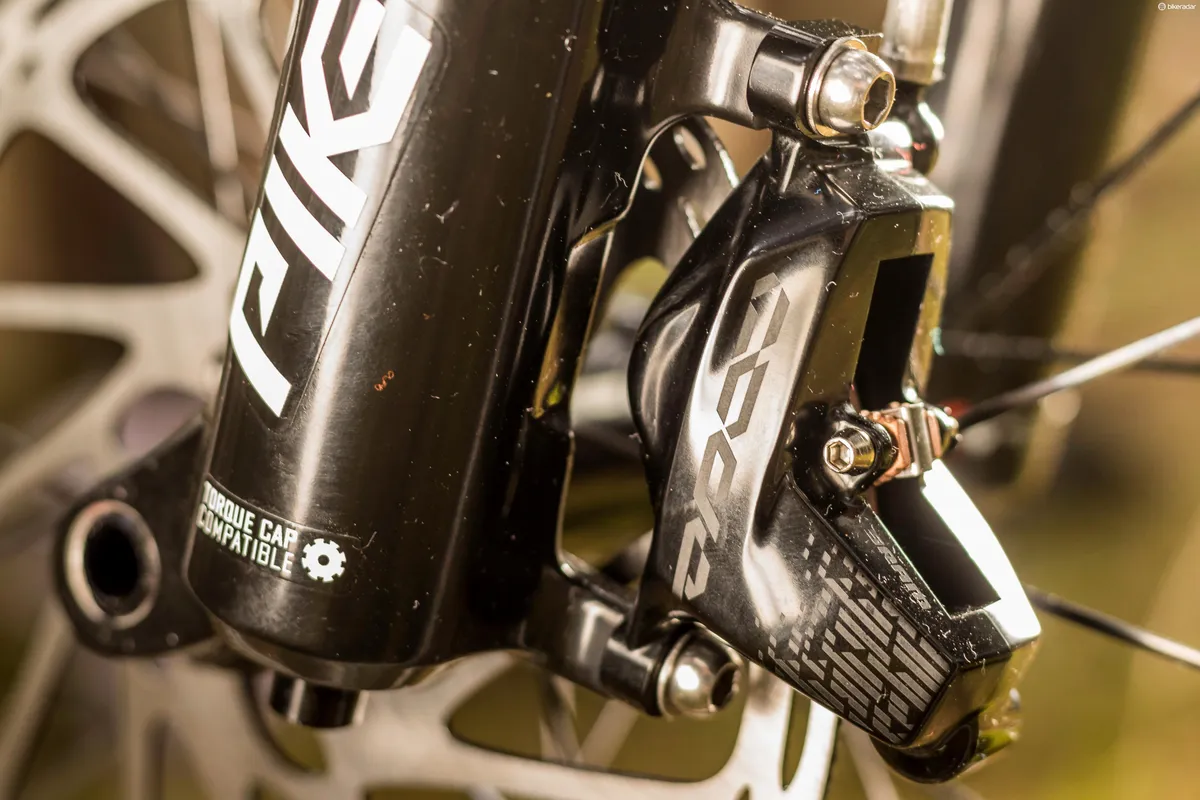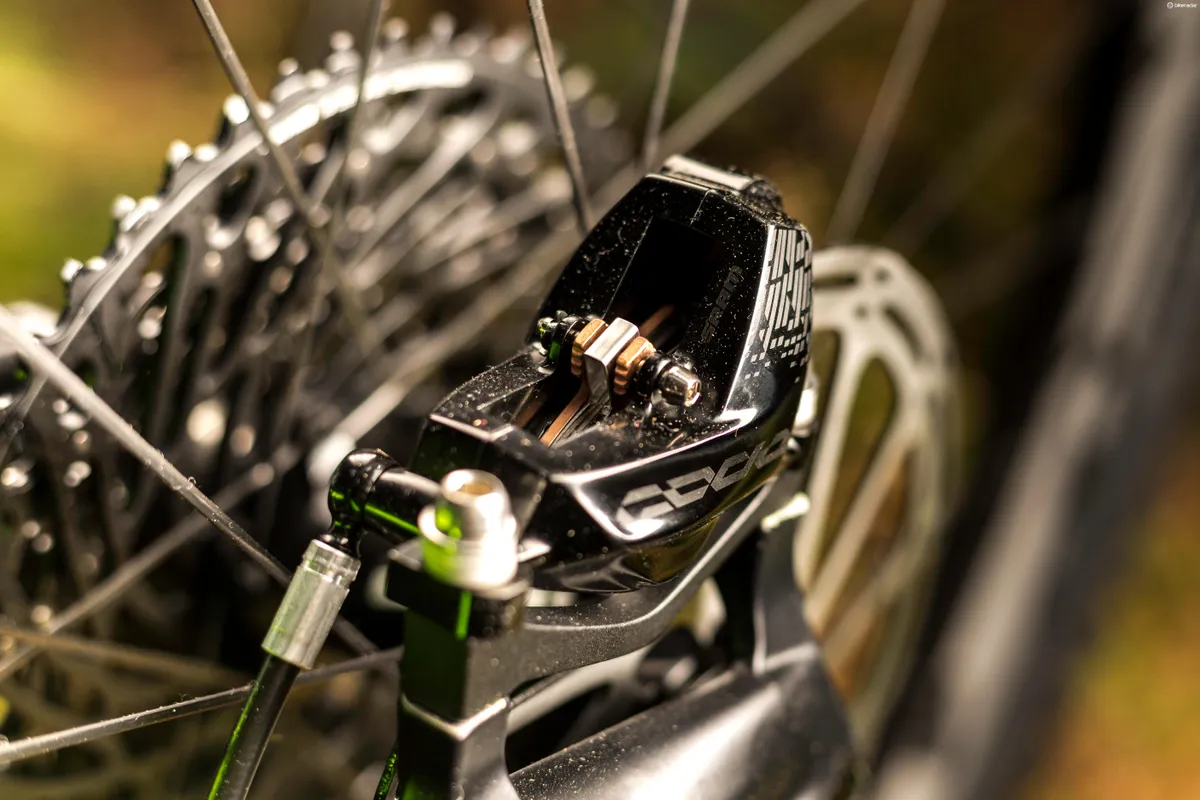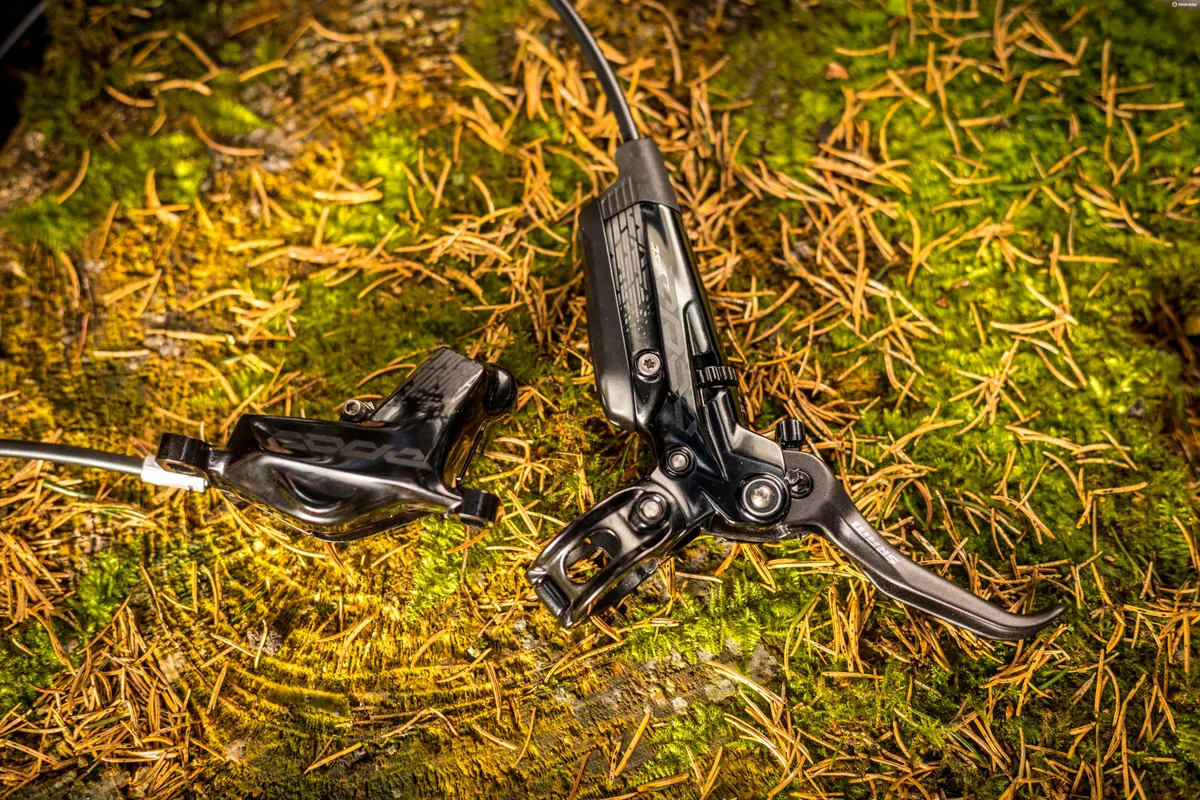Over the course of a decade, it’d be fair to say you’d need more than just your fingers and toes to tally up the number of times a set of Avid Code brakes have been bolted to a World Cup winning bike. While they may well have seen their share of success on the professional circuit, Codes were also the choice of many a privateer.
Ten years since their inception, and now under the SRAM rather than Avid banner, their shape and design may have changed, but their intention remains the same. The Code remains SRAM’s ‘gravity’ brake offering, although I had no issues using it on a regular trail bike when I spent a couple of days testing them out.
How to pack a punch

The new Code brake will be available in two different models: the top tier Code RSC or the more cost effective and slightly more basic Code R.
If you think the new brake looks familiar, you're not wrong. The Code's lever design and layout are based on SRAM’s popular Guide lever, but due to the demands of downhill riding and racing, it’s actually a bit bigger. That means a 30 percent increase in positive fluid volume over a Guide lever and close to 50 percent more than the old Code. So they should deal with heavy, prolonged braking in a much more consistent manner.
Like the Guide lever, the new Code lever shares many of the same features, including the Expandable Bladder and Timing Port Closure, which both help to improve reliability and consistency; a lever pivot bearing (only featured on the RSC, the R uses a bushing); and the Swinglink system, which is essentially a small cam configuration that pivots on a Teflon-coated bearing and reduces the amount of lever deadband — again though, the Swinglink system only features on the top RSC model.
In terms of adjustments, both versions of the Code brake get the updated reach adjuster that feels easier and more solid in use than the previous iteration, which didn’t go without criticism.
If you’re happy to shell out the extra cash, the RSC model means you also get a contact point adjustment dial, which lets you fine tune things that bit more.
The business end

At the other end of the D.O.T 5.1 filled hose sits the new Code caliper. Again, it’s easy to spot similarities here because the new Code caliper is very similar to the S4 caliper, which we first saw on SRAM’s Guide Ultimate brakes when they debuted back in 2015.
The new Code caliper accepts standard Code pads, which is a plus if you already have spares stocked away
Like the caliper it’s based on, the all new Code caliper uses four pistons, though this time one pair of the pistons grow in diameter. The leading pair of pistons in the Code caliper are 15mm in diameter (the Guide S4 caliper uses a 14mm leading pistons), while other pair of pistons are 16mm, just like in the S4.
The cheaper Code R uses alloy pistons and the pricier RSC version gets phenolic resin numbers, which are better at dealing with heat build-up.
Bleeding is made as painless as possible courtesy of SRAM’s ‘Bleeding Edge’ technology. The Code’s bleed port works in conjunction with SRAM’s specific push/pull locking fitting in a bid to remove more of the mess and faff when bleeding. Inside the caliper there's a less complex, parallel oil path that should make it harder to trap air in the system and make pushing oil through the caliper easier.
Both models get the already established heat shield, which is designed to reduce heat travelling from the pad into the caliper and hose in a bid to avoid brake fade.
You’ll also be pleased to hear that the new Code caliper accepts standard Code pads, which is a plus if you already have spares stocked away.
Aside from the change in piston material, the pricier RSC gets lighter hardware to keep overall weight down, too.
Overall, SRAM claims the new Code brake offers a 15 percent increase in power with a nine percent increase in weight when compared to the Guide RSC brake.

SRAM Code pricing and weights
The Code RSC will set you back £230 / $244 / AU$TBC (per end, including rotor) and weighs a claimed 433g, while the Code R will cost £145 / $154 / AU$TBC (per end, including rotor) and weighs a claimed 433g.
SRAM Code initial impressions
Two wet days riding in the Forest of Dean really isn’t enough to get the measure of brakes capable of slowing the fastest downhill racers in the world, especially considering the lack of elevation we were dealing with.
Regardless, lever feel is smooth and light considering the stopping power on tap. Even when the bike was totally caked and the trail swamp-like, the new Codes still managed to deliver in a consistent manner. On steeper chutes where I had to drag the brakes, they didn’t pump or fade and I felt I could control the power with relative ease.
There’s plenty of punch when you need it though, but it’s easy enough to regulate rather than feeling like you’ve deployed a chute and hit a brick wall.
The improved lever reach adjusters are certainly nicer and easier to use than previous versions on the Guide brakes too.
As I said though, with very little time on the Codes so far, it’s very hard to draw any real conclusions, but I have a set with me on test now so will give you the full low down when I’ve put some real time in on them.


